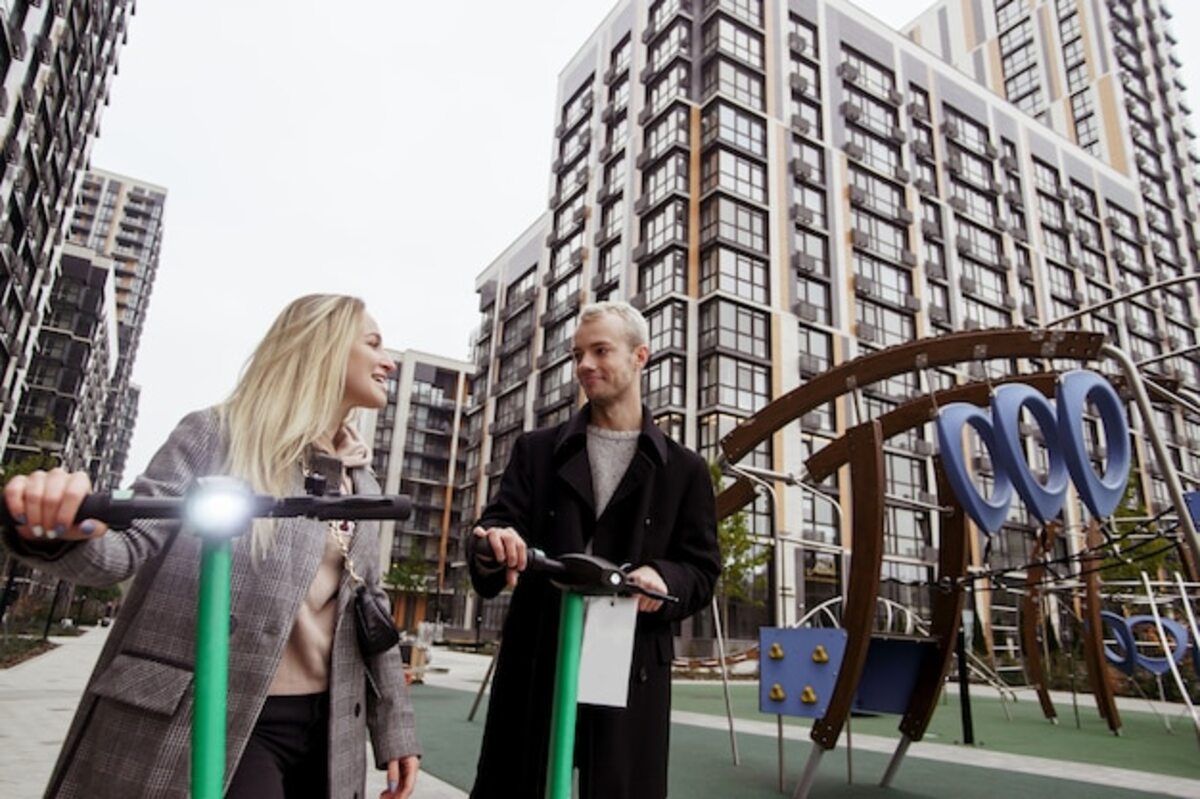The transformation of surplus value through participatory urbanism.

The transformation of added value through participatory urbanism is a reality that is gaining strength in the emerging areas of Costa Rica. This innovative approach not only seeks to maximize land value but also to empower local communities in decision-making that impacts their environment. By involving citizens in the urbanization process, a synergy between economic development and social well-being is achieved, generating a positive impact on added value. Discover how this model can redefine the urban future of the country.
1. What is added value and why is it important in urbanism?
Capital gains refer to the increase in the value of a property or land over time, generally driven by factors such as improvements in infrastructure, economic development, and population growth. In the context of urban planning, capital gains become a key indicator for assessing the success of urban development projects. When policies are implemented that promote sustainable and equitable growth, they contribute not only to the increase in property values but also to the overall well-being of the community. Therefore, understanding what capital gains are is essential for any initiative aimed at transforming urban environments.
The importance of added value in urban planning lies in its ability to create a virtuous cycle between investment and social return. By fostering participatory development, where citizens have a voice and a vote on how their environment is transformed, more inclusive and functional spaces are generated. This not only increases real estate value but also ensures that the economic benefits derived from this increase are redistributed among all members of the community. Thus, added value is not simply an economic metric; it is a reflection of the commitment to urban development that prioritizes both financial growth and social well-being.
The role of participatory urbanism in emerging areas.
Participatory urbanism stands as a fundamental pillar in emerging areas, where the integration of community voices can radically transform the urban landscape. This approach allows residents to be not only passive beneficiaries of development but active participants in the creation of their environment. By facilitating spaces for dialogue and collaboration among citizens, local authorities, and developers, a more inclusive planning process is achieved that responds to the true needs and aspirations of the community. This participation not only ensures that projects are sustainable and relevant but also fosters a sense of belonging and collective responsibility toward the shared space.
Additionally, participatory urbanism contributes to added value by generating trust among the different actors involved in the process. When communities feel they have a voice and a vote in how their environment develops, they are more likely to support initiatives that promote their well-being. This collaboration can result in innovative solutions to common urban problems, such as the lack of adequate infrastructure or insufficient public spaces. As these projects are implemented with the active approval of citizens, the value of the area increases due to the improvement in quality of life and the attractiveness of the place for new investors. Thus, participatory urbanism not only benefits those already residing in these emerging areas but also attracts new economic and social opportunities.
3. Economic benefits of participatory urbanism for communities.
Participatory urbanism not only empowers communities in decision-making but also brings significant economic benefits. By involving citizens in the design and development of their urban spaces, a sense of belonging is fostered, leading to increased local investment. Residents, feeling part of the process, are more likely to contribute innovative and sustainable ideas that can attract private and public investment, thereby improving local infrastructure and enhancing quality of life. This collaboration creates a virtuous cycle where economic growth goes hand in hand with a more cohesive and active community.
Additionally, participatory urbanism allows for the identification and prioritization of the specific needs of each community, which can result in more efficient projects that are tailored to local realities. This not only maximizes the use of the allocated budget but also reduces the risk of failed projects that consume resources without providing tangible benefits. As a result, communities can experience a significant increase in their land value, as well-planned spaces that are adapted to local needs attract both new residents and businesses interested in establishing themselves there. In this context, the economic benefits derived from participatory urbanism become fundamental pillars for the sustainable development of emerging communities.
4. Successful cases of urban transformation in Costa Rica.
One of the most emblematic cases of urban transformation in Costa Rica is that of the neighborhood of La Carpio, in San José. This area, historically marginalized and with scarce opportunities, has been the subject of a participatory urbanism process that has allowed its residents to take an active role in improving their environment. Through community workshops and collaboration with non-governmental organizations, projects have been implemented that range from the construction of public spaces to the development of local economic initiatives. As a result, La Carpio has not only seen an increase in its value but also a significant improvement in the quality of life of its residents, who now enjoy a safer and more cohesive environment.
Another highlighted example is the project "Las Urbanas" in Desamparados, where underutilized spaces have been revitalized to turn them into recreational and cultural areas. The participatory approach has been key in identifying the needs and desires of the local community, leading to the creation of a multifunctional urban park. This initiative not only promotes social well-being by providing places for recreation and community activities but has also increased the value of the surrounding area. By encouraging citizen participation from the project's outset, it ensures that the solutions are sustainable and aligned with the neighborhood's interests, thus establishing a replicable model for other areas of the country.
5. How to engage the community in the urban planning process.
Community participation in urban planning is essential to ensure that the decisions made reflect the true needs and aspirations of the inhabitants. To engage the community, it is crucial to establish open and accessible communication channels where citizens can express their opinions and concerns. Organizing workshops, forums, and neighborhood meetings creates a conducive space for dialogue, facilitating that the voices of diverse social groups are heard. Additionally, using digital tools such as online surveys or interactive platforms can broaden participation, allowing more people to contribute to the decision-making process from the comfort of their homes.
Another key aspect of this process is education and awareness about participatory urbanism. It is necessary to provide clear information about how the urban planning process works and what benefits it can bring to the community. Conducting informational campaigns that highlight successful examples of participatory projects will help motivate citizens to get actively involved. By empowering residents with knowledge, not only will their interest in participating be encouraged, but a sense of belonging and responsibility towards their urban environment will also be cultivated. This emotional connection to the space where they live is crucial to ensure that future development is sustainable and aligned with collective expectations.
6. Challenges and obstacles of participatory urbanism.
Participatory urbanism, although it offers a number of significant advantages, faces multiple challenges and obstacles that can hinder its effective implementation. One of the main challenges is the lack of information and knowledge among citizens about their rights and the urban planning process. Distrust in public institutions can also be a barrier, as many communities feel excluded or ignored in decisions that affect their environment. Without a clear framework for communication and education, it is difficult to promote active and engaged participation that truly reflects the needs and desires of the community.
Another significant obstacle lies in the management of time and resources. Participatory processes are often longer and more complex than traditional urban planning approaches, which can lead to frustration for both citizens and policymakers. Furthermore, when trying to integrate diverse voices and interests, there is a risk of conflicts among different groups within the community. These conflicts can result in internal divisions and hinder the creation of the necessary consensus to advance urban projects that benefit everyone. Overcoming these challenges requires a genuine commitment from local authorities to establish clear channels of communication and facilitate inclusive spaces where everyone can express their opinions and influence the urban future.
7. The relationship between sustainability and added value in urban projects.
Sustainability and added value in urban projects are intrinsically linked, as sustainable development seeks not only to protect the environment but also to increase the value of urban assets. By integrating sustainable practices into urban planning, such as the use of green spaces, energy efficiency, and proper management of water resources, a more attractive environment is created for residents and businesses. This not only improves the quality of life for inhabitants but also increases property values in those areas. The implementation of sustainable strategies allows cities to not only adapt to the demands of climate change but also to position themselves as desirable places to live and invest.
Furthermore, community participation in sustainable urban projects strengthens this relationship between sustainability and added value. When citizens are active participants in the decision-making process, solutions are generated that address their real needs and foster a sense of belonging. This emotional connection to the place can translate into greater care and maintenance of the urban environment, which helps to preserve and even increase its long-term value. In this way, by prioritizing social and environmental inclusion in participatory urban planning, a virtuous cycle is established where both the community and real estate capital mutually benefit.
8. Technological tools to promote citizen participation.
The integration of technological tools has revolutionized the way communities can actively participate in urban planning processes. Digital platforms, mobile applications, and social media facilitate communication between citizens and authorities, allowing everyone's voices to be heard. Through online surveys, virtual forums, and interactive maps, residents can express their opinions on urban projects, contribute innovative ideas, and collaborate in land use planning. This democratization of information not only improves transparency but also empowers citizens by making them direct participants in decisions that affect their quality of life.
Additionally, the use of technologies such as Big Data and geospatial analysis allows urban planners to better understand the needs and desires of communities. By collecting data on mobility patterns, aesthetic preferences, and social needs, more inclusive and functional public spaces can be designed. These tools not only foster an open dialogue among different social actors but also help identify priority areas for sustainable urban development. In this way, technological tools become essential allies in transforming added value through a participatory approach that places the citizen at the center of the urban planning process.
9. The future of urbanism: trends towards inclusive and sustainable development.
The future of urbanism is framed within an inclusive and sustainable approach that responds to the emerging needs of urban communities. This development model seeks to integrate not only economic aspects but also social and environmental ones, promoting spaces where all voices are heard. By adopting a participatory approach, collaboration among citizens, local authorities, and developers is encouraged, allowing for the creation of more resilient urban environments adapted to local realities. This type of urbanism aims to transform added value not only in monetary terms but also as a tool to improve the quality of life for residents.
Moreover, the future of urbanism is marked by the growing awareness of the importance of the environment and social well-being. Current trends point towards innovative solutions that incorporate green spaces, sustainable infrastructure, and efficient transportation systems. These initiatives aim not only to increase the economic value of land but also to ensure that urban development benefits all sectors of the population. In this context, participatory urbanism can be key to building more equitable and sustainable cities, where every individual has access to opportunities and essential resources for their personal and community development.



